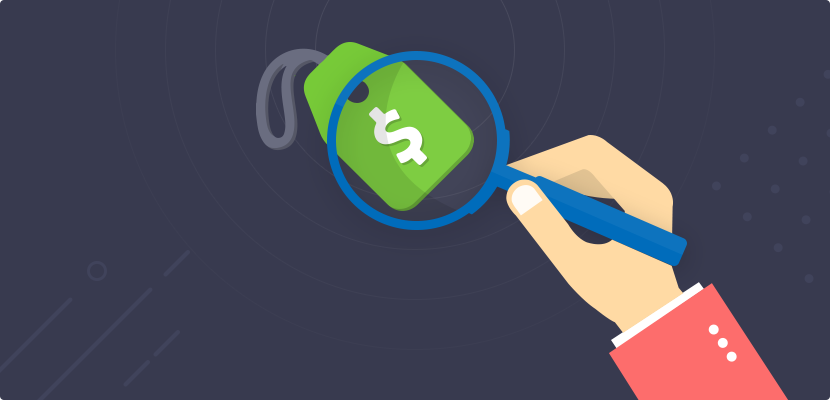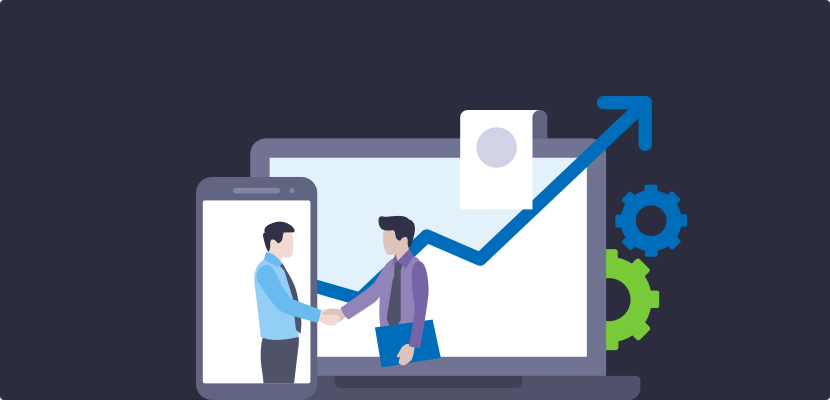
Deciding on a pricing strategy for a SaaS is often not as easy as it looks.
Most products have a fixed price and a simple pricing strategy. The manufacturer procures the raw materials, produces the good, adds a margin to cover his profits. This process results in the price.
SaaS companies do not have such measurable metrics. Neither do they have a recurring product cost every time someone sings up for their product. This ability to scale comes with its own set of problems.
The pricing strategy is defined by, and in fact integrated into your product. It is dependent on parameters like usage and features, making it a complex process. If you are a SaaS founder, you know exactly what we’re talking about.
Getting the pricing strategy for your SaaS right involves a deep understanding of your product and how it fits into the customer/ market ecosystem. You should have answers to a few questions for defining a pricing strategy that works.
- Which Market Segment? This is probably the most important question of all. Who will be your ideal customers? This customer persona will define your approach towards pricing, as there are the people you’re selling to.
- Where do you want to position yourself in the market? Do you want to be seen as the high price premium provider for elite customers? Or the low price low-end leader? Asking these will help in the process of fixing your price, and whether you are going for the quality or quantity of users.
- What Value/ Perceived Value are you providing? The users don’t care about how many hours you’re sitting behind your desk per week or how many years you put in to build your product. They will look at the value you provide, the price you're asking for it, and whether or not they are willing to pay for it. For deciding this, keeping the 10x rule in mind is a good idea.
- What Metrics will the price be based on? Will it be per user? Per functionality or per features? What extra value will the paying customers get? You have to provide and limit your free offerings to just enough value so that customers can see the benefits and be happy to pay more.
- Estimated Customer Life Time and LTV? What is the average time duration customers stay with you? The revenue they generate over this time (including upsells, updates etc) is called the Life Time Value (LTV). To be on the right path, the LTV for users on average should be greater than the money you’re spending to acquire them. Once you these answers, you can get a clearer picture of your pricing. Let us dive into some of the most popular strategies.
Popular SaaS Pricing Strategies
1. Freemium
Freemium basically means allowing users access to a limited or lite version of your product for free, forever. The users pay when they want to increase their usage or features beyond a certain limit.
Pros:
- Startups in their initial stages face problems with user adaptation and building a user base. A freemium pricing is a good solution to this. If your product is providing real value, people will be more than happy to sign up.
- As the early adopters realise the value of your product, your user base will grow quickly via referrals and shout outs. You will also get a lot of press and traction for free, along with a positive brand image.
- It makes sense in the early stages of your product, as it will have many bugs and pain points for users. By providing users free access you can build a very short feedback cycle to improve your product exponentially.
So, an ever-increasing user base, consistent feedback, and a good brand image in the market. Sounds pretty good, right?
As you might’ve guessed, Freemium has its problems as well.
Cons:
- As your user base will keep increasing, you will need additional resources to provide continued support to users, including the people who are using the free version (that is, not bringing in any revenue).This can be a problem if you do not have enough paying customers.
- Some people would have shifted to your product because it was a “free alternative” to some other service. This brand image of “free solution” can be hard to change. Many users will be unwilling to pay for the services they’ve been using for free until now.
- Some small scale users will be satisfied with the functionality of your “free” version. As your user base will grow, you would be losing out on revenue from a large number of these ‘small accounts’.
Who is it good for?
If your product has multiple strong features, you can choose a freemium pricing strategy. The more interconnected these features are, the better it works as a freemium. Make one of them available for free, and users have to pay to use the other ones.
This also works when you can make the user dependent on your product for a crucial task (eg. If you use Dropbox for storing work files, and you reach the free limit, you will most probably look to expand it to continue using it).
2. Free Trial
Under this pricing strategy, you offer full access of your product to users for a trial period, and charge them once it ends.
Pros:
- Freemium has a user segment that you have to provide support to even if they’re not paying. Free trial solves this problem, so you can dedicate all your resources to the users who are bringing in the revenue.
- Free trial allows you to charge higher prices, as it gives an impression of using a free trial of a “premium” product.
Cons:
- It can be very hard to get users to sign up for your trial unless your product offers a truly unique, powerful solution to a problem. Decision makers in companies have very less time, and some might skip signing up just because they’re busy.
- The free press and referrals you get from freemium that bring new users - they can be somewhat harder to get here. Your product may be amazing, but it won’t be profitable if enough people don’t sign up.
- Once you have successfully got the users to sign up, you have to make sure that they use the product. Your product onboarding must be executed perfectly, and the user must see the value that your product adds, multiple times before the trial period ends.
Who is it good for?
A free trial works best for the products which provide a strong solution for a focused/singular problem. The more focused your solution is, the earlier the users will see the value in a trial and will be willing to pay.
3. Other Pricing Strategies
Free trial and Freemium are the most popular SaaS strategies, both having their own advantages and downfalls. As each SaaS product is different, many companies go for different strategies which are a mix of these both. Some examples:
- Neither Freemium nor Free Trial
At Custify, our customer success app, we use this pricing strategy. If you go to our homepage, you will see that you can sign up for us get in touch with you. You can see a demo, but you only get to use the product when you pay.
This strategy can be when a company stands a 100% behind its product and is sure of the value it provides. It works because it puts the product in a premium space above competitors.
This plan can backfire, however, if you can’t promise the value you deliver.
- Both Freemium and Free Trial
Some companies like Spotify and Buzzsumo use this hybrid by offering a freemium version to all users. If the users want to switch to premium, they can have a free trial of the premium version.
The free version generates a great brand image and brings a lot of users to your product. Then, since they’re also offering a free trial run, many users might convert to paying ones out of these.
Again, this may or may not work for your product. By combining the both of these, you can also face the brunt of disadvantages of both these pricing strategies.
In Conclusion
SaaS pricing strategies do not have fixed rules – there is no right or wrong way to do them. You just have to find out what works for you.
It is always good to experiment with different strategies to find out what works best for you.




